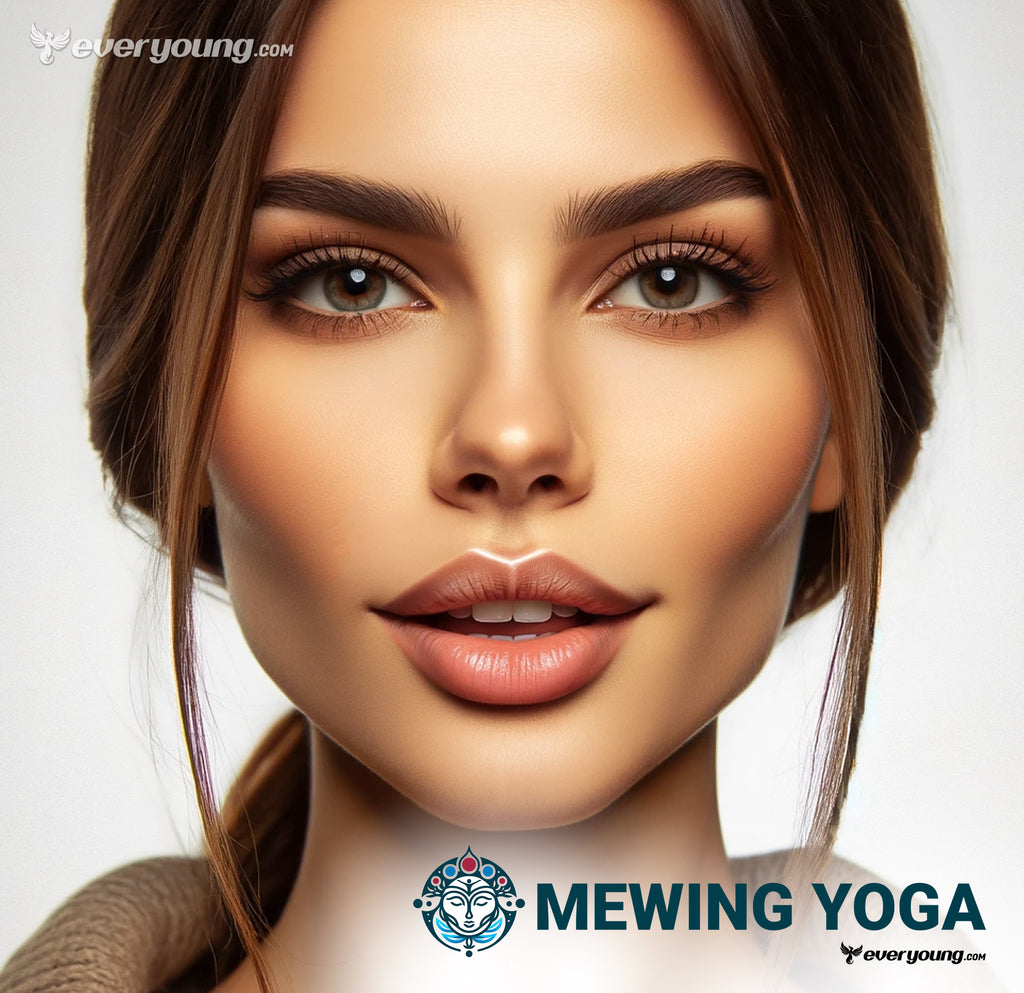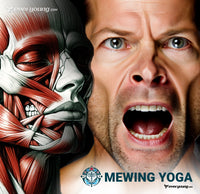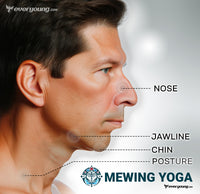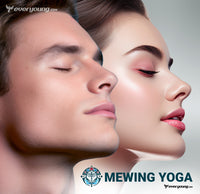3. Chin Movement Exercises
As endorsed by numerous practitioners, a simple yet effective strategy to support jawline enhancement involves a foundational exercise integral to mewing practice. This exercise begins by establishing a basic mewing posture: create a vacuum in the mouth by suctioning air, prompting the tongue to press firmly against the roof of the mouth.
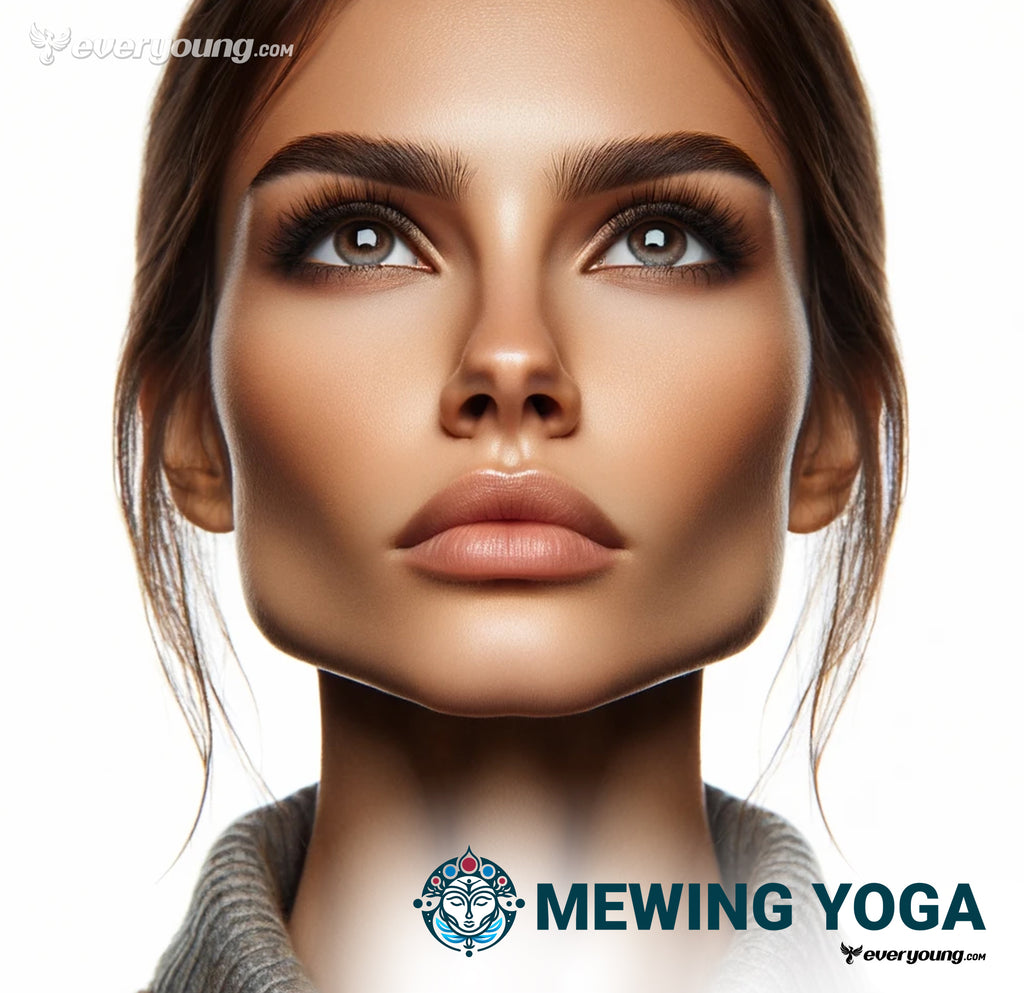
Exercise Steps:
- Initiate with the Mewing Posture. Begin by creating a vacuum in the mouth to engage the tongue's placement against the palate.
- Jaw Lifting and Side-to-Side Movements. Gently lift your jaw and move it from side to side, ensuring to cover as wide an amplitude as possible. These movements should be performed smoothly, first in a clockwise direction, then reversing to counter-clockwise.
- Frequency. Execute this movement 20-30 times to each side for optimal engagement.
Alternative Variation
For a slight variation, tilt your chin upward by 45 degrees and incorporate a gentle kissing motion with the lips, holding this position for 5-10 seconds. This variant should be repeated 10-20 times for both sides, offering a focused stretch and strengthening of the facial and neck muscles.
Engaged Muscles
This exercise primarily involves the sternocleidomastoid muscles, which run along the sides of the neck. These large muscles play a crucial role in the movement and stability of the head and neck, contributing to a more defined jawline and neck contour when appropriately exercised.
Additional Considerations
- Environment. While it's often said that facial exercises can be performed anywhere, choosing a comfortable and private setting can enhance focus and effectiveness.
- Posture. Maintaining an upright posture throughout the exercises ensures the neck and jawline are correctly aligned, facilitating maximum muscle engagement.
- Consistency and Patience. Regular practice is critical to seeing improvements. Consistency, coupled with patience, will yield the best results over time.
Chin movement exercises, especially when combined with mewing, offer a practical approach to enhancing the jawline's definition. By incorporating these exercises into your daily routine, you engage the facial muscles and critical neck muscles, promoting overall facial and neck health. Remember, the improvement journey is gradual, and steady practice is essential.



